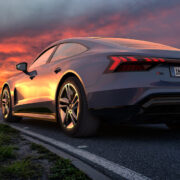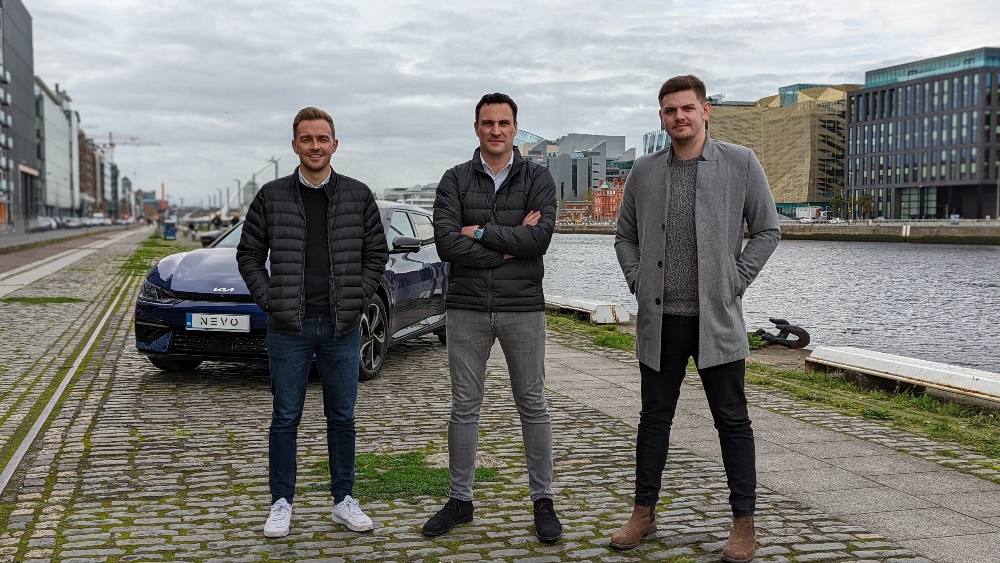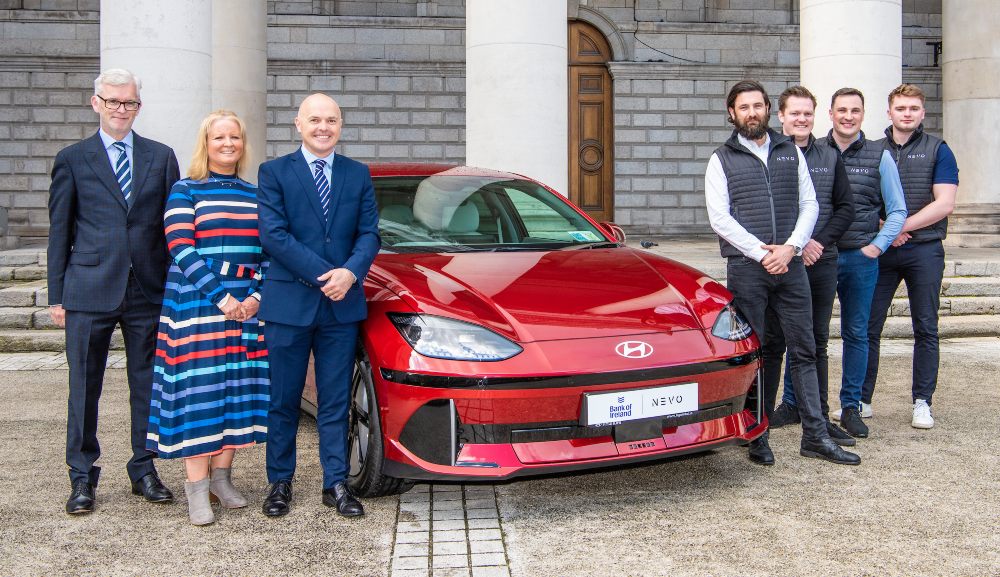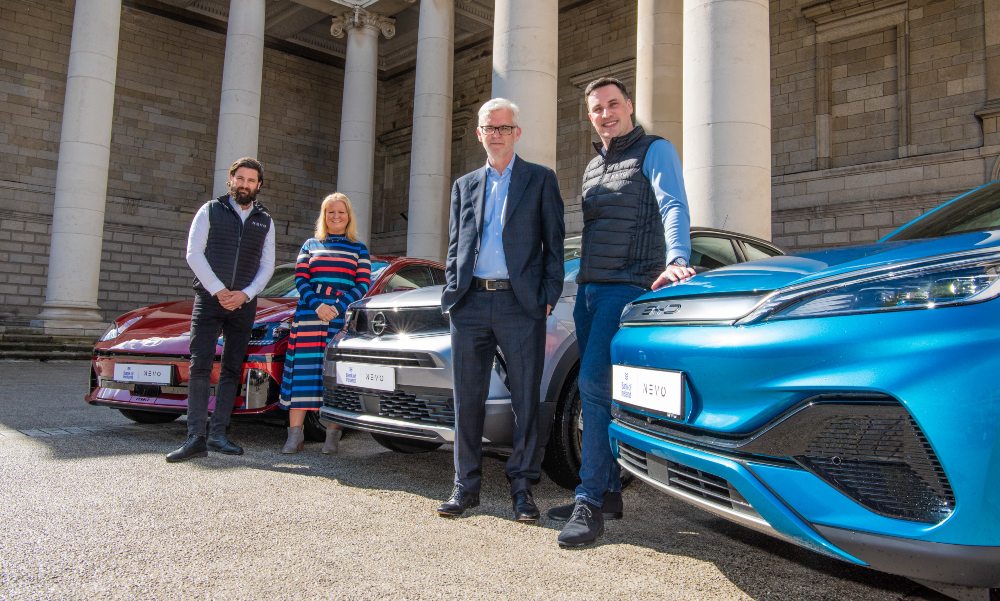Podcast Ep 193: The recent sold-out Electric Vehicle Show in Dublin revealed much about the intentions of the Irish driving public to learn as much as they can before they buy.
With more than 20,00 tickets ordered, the recent Nevo Electric Vehicle Show at the RDS in Dublin was packed and the curiosity that was in evidence was clearly indicative of the major shift that is occurring in Irish motoring.
Drivers are accelerating their move from vehicles powered by petrol and diesel to hybrid and fully electric vehicles.
“We think people want to understand the options so that they can get to an informed decision”
Alongside traditional car brands like Hyundai, Opel, Volvo and Citroen were a whole new slew of Chinese and Chinese-owned electric car brands including BYD and MG.
Rolling into the future
According to a recent Motoring Report from Carzone, diesel car purchases have declined by 7% in contrast to the 6% rise in electric and hybrid car sales, confirming a palpable transition in the market.
Carzone’s survey of 1,000 motorists found that 54% plan to purchase an electric or hybrid vehicle as their next car, up from 19% last year.
First we spoke to Derek McDermott from Bank of Ireland Finance, a key sponsor of the event, and Derek Reilly from Nevo, who organised the event, about the success of the event and electric car buying trends they are seeing in the Irish market.
Reilly said he was blown away by the amount of people who were through the doors and the amount of deposits and sales that happened throughout the day. “Today is all about the education piece. It’s great that people are seeing and hearing and understanding [more about] electric vehicles and putting down that order.”
Reilly said that there are now 25 leading automotive brands in Ireland with 50 different types of electric vehicle. “That’s what we wanted to do with the Electric Vehicle Show as a mobility event, to help people understand what’s available, what range it will do and if it suits their needs. We didn’t expect it to be a sales event but much more than that.”
McDermott said that the core purpose of the event was education, even though sales were happening. “We think people want to understand the options so that they can get to an informed decision.”
Speaking on a panel earlier in the day McDermott asked the audience for a show of hands for how many of them already owned electric cars and he was surprised how many already had EVs. From a finance perspective, he said the motoring public are already quite educated around options such leasing and PCPs (personal contract plans).
The education piece is vital from both a financial and motoring perspective. “You have to understand how the finance will work for you. You need to understand what happens at the end of the term. You need to understand range, charging and again we have people who are here to help buyers organise finance. But that’s not our primary purpose today, we are here to help people understand primarily from the car perspective. And from a finance perspective, if it works for them then it works for us.”
Powering electric dreams
Next we spoke to Dominic Crotty, a seasoned electric vehicle owner about his experiences of being an EV owner and what he has gained from the show. He also talks about what’s happening on the charging infrastructure front.
“I bought my first electric vehicle in 2019. I currently have a Volkswagen ID4. The main reason I came up here today was to look at some of the Chinese cars like BYD. I want to look and see what they’re like compared to what I’m used to having. I’m kind of excited about that because I think they are going to take over because they’re very cheap.”
As a driver Crotty said he’s not overly concerned about range as the country is the right size for getting around in an electric vehicle. “I came up today from Wexford where I live and I didn’t have to stop.”
He said that while the introduction of more electric charging infrastructure at motor service stations is to be welcomed, he says the confusion being caused by different apps and prices is not ideal. “ESB has just one app and a map of where their chargers were and you could plan your journey. They just need more of them.”
Crotty said he has found electric vehicles cheaper to run than fossil fuel counterparts but urges people to install a home charger where they can. “If you have a home charger you can plan well and get a car with a decent range. In fairness, nobody travels more than 400 kilometres a day anyway.”
At the other end of the spectrum were the curious who have yet to take a leap into electric vehicle ownership. At the event were Sean and Teresa Butler. They explained that they were looking at electric vehicles as an affordable option.
“I drive a Skoda Octavia but eventually I’ll have to get an EV like everyone else,” Sean explained. “I don’t think you have a choice, the situation is going to be you can have an EV or you can have an EV. I don’t see a future for petrol or diesel. I would never dream of getting a diesel again because that seems to be out of the question.”
Teresa added: “I would be interested in electric because I believe they will be cheaper to run.”
She said that while prices are coming down for electric vehicles she’s hopeful they will come down further. “I think the bigger cars are very expensive. So hopefully they will have more smaller cars available.”
Representing the new wave of Chinese cars coming on the market is Gerard Lynch, managing director for BYD (Build Your Dreams) at car dealership MSL. As we spoke the stand was swamped by would-be car buyers checking out the BYD Dolphin and the BYD Seal.
“Ever since BYD came into the market in April, it’s really captured the imagination of the Irish public. The technology is the main selling point,” Lynch said, pointing to BYD’s blade battery as a key differentiator in the market. “It’s a cobalt-free battery, which is obviously fantastic from an environmental perspective. But it’s the technology, the specifications of the cars and the BYD look that has really captured the imagination of the people.”
Pointing to the BYD Seal, Lynch said the queues to see vehicle have been significant as people sought to learn more about the 520-kilometre range. “We haven’t had any significant issues with range anxiety from customers, which tends to be an issue for people moving into electric. The feedback from BYD customers has been really positive around that.”
While the MG brand might conjure up images of classic British sportscars lovingly in rural English workshops, the brand is now actually owned by a Chinese manufacturer in Shanghai and the cars it is bringing to the Irish market are remarkably affordable. We spoke to Carl Kierans from Linders Finglas MG about all the excitement around MG which he puts down to affordability and style.
Pointing to the MG ZS electric vehicle which retails from €35,495 and which has a range of up to 440-kilometres, Kierans said that a big selling point has been the seven-year warranty. “That makes it just the best value car out there to be honest. It’s just what the market needed in Ireland and Europe. People want a good car with a good entry price.”
In terms of electric car buying trends, he said original buyers tended to be from cities like Dublin but now more and more cars are being bought in the regions as more charging infrastructure is rolled out.
“The plan is to ensure that there’s electric chargers every 30 to 40 kilometres and that will really help.
“I think people are migrating to electric to try and save money. Some companies are doing cheap night rates for as little as 10 cents per unit of electricity which means you can charge one of these cars for €5 or €6 and you can schedule the car to charge at night time. That’s a hell of a lot cheaper than putting €20 or €30 of petrol or diesel into a car for half the range. This is the first proper electric car show with 20,000 tickets sold, and that just shows you the interest that’s out there.”
Finally, traditional car brands from Ford and Toyota to Audi and Volvo are also vying to take pole position in the race to electric. I spoke to Volvo product manager Barry Walsh about how the Swedish carmaker has delivered an impressive electric line-up.
Swedish car giant Volvo had its new flagship EX30 on display. “We’ve had a lot of interest in the car and a lot of people travelled up to the show to take a look at it,” said Barry Walsh from Volvo Ireland.
“It’s a new type of battery for us, an LFP battery. We have a short range version and we do an extended range version of up to 470-kilometres range. It’s a new direction for us in terms of how Volvo is operating with a new centre screen and a new interior that brings out our sustainability credentials. It has the lowest CO2 footprint of any Volvo at the moment. 17% of the car is made from recycled material. So overall great interest in the car.”
Walsh said that what was evident at the show was the sheer curiosity people have about the new epoch of transport. “It mainly comes down to the different technologies involved. A lot of people are trying to learn about whether they want to go fully electric, what size battery suits their needs. It’s about tailoring the car towards each person because each individuals circumstances are different. We have lots of questions around charging, range and fast-charging, the size of battery and what battery suits their needs. We have gotten lots of questions around how is Volvo different to other manufacturers. So it’s clear that people are here to learn and there’s a lot of curiosity, definitely.”
- To learn more about finding your next electric or hybrid car and financing it click here
-
Bank of Ireland is welcoming new customers every day – funding investments, working capital and expansions across multiple sectors. To learn more, click here
-
Listen to the ThinkBusiness Podcast for business insights and inspiration. All episodes are here. You can also listen to the Podcast on:
-
Apple
-
Spotify
-
SoundCloud





